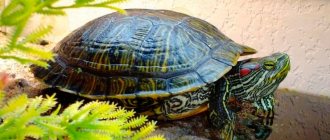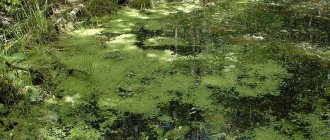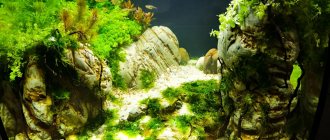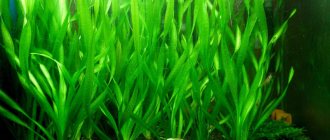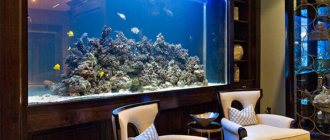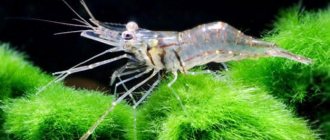Turtles are a large order belonging to the class of reptiles. The biological classification identifies more than 300 animal species, forming 14 families. An analysis of the fossil remains of the ancestors of modern turtles showed that the first representatives of the order appeared about 200 million years ago. During the existence of reptiles, their appearance has changed little, but the numbers of some species have reached critical levels in recent centuries. Currently, 228 species of turtles are listed in the International Red Book, half of them have the status of “endangered species”. The main factors influencing the population size include the capture of animals for food and jewelry, changing habitats and environmental pollution, and death as a result of an increase in the number of natural enemies.
Characteristics and description
Depending on their habitat, all turtles are divided into two large groups:
- marine;
- ground.
Land-dwelling species are also divided into land and river species.
Regardless of their lifestyle, all reptiles breathe oxygen. The respiratory organs of a sea turtle are the same as those of a land turtle. Since the ribs of animals are fixed in one position, the decrease and increase in lung volume occurs due to the muscles pulling the internal organs and then returning them back. At the same time, such a volume of oxygen can enter the lungs, which is enough for the animal to stay under water for several hours or even days. After this, the turtle rises to the surface for another breath.
Reptiles have a three-chambered heart, the spinal cord is very well developed, but the brain is not very large: it weighs only 1/1000 of the total mass of the animal.
Turtles lead a solitary lifestyle and are distinguished by a rather aggressive character, this behavior is especially evident in relationships with relatives.
What does it look like
The main external feature that distinguishes turtles from other reptiles is the presence of a shell. It consists of two parts: a convex carapace covering the back, and a flatter plastron located under the abdomen. In addition, the appearance of turtles has several more features:
- the head is slightly elongated and flattened on top, the eyes are located on the sides; in marine reptiles they are located in the upper part of the head;
- the animal has thick forelimbs and flatter hind limbs; in land turtles, the surface of the front paws is protected by dense scales; the paws of marine reptiles have transformed into flippers;
- Reptiles have a small tail; water-dwelling individuals use it for maneuvers.
Shell structure
In appearance, the shell looks like one continuous horny shield. In fact, it has a complex structure and is formed from 50 different bones by stretching and fusion of the ribs and vertebrae of the skeleton. If you look at the remains of fossil animals, you will see that the carapace on the inside resembles a rib cage located outside the body.
Many cartoons show how a turtle can freely leave its shell and return to it. This creates a false perception of the significance of the carapace and plastron for the reptile. In fact, these are parts of the turtle's skeleton, and without its shell it simply cannot survive. In addition, the horny plates have nerve endings and blood vessels, so damage to them causes pain to reptiles and can cause bleeding.
Most land turtles retract their heads by bending their necks into an S shape. Some species lay their necks sideways, pressing their heads against one of their forelimbs. Depending on this, secret-necked and side-necked turtles are distinguished.
Far Eastern
Lives at the bottom of lakes or rivers. The surface should be covered with a layer of silt. The coastal slopes are covered with bushes and grass. The habitat forms the name of the species. It grows up to 30 cm, has an aggressive character, and defends itself from attackers. It prefers to eat insects, fish, and shellfish, grinding them with its strong jaw.
It obtains food by hunting; the reptile is able to wait in ambush, hiding in the bottom silt. And it finds food on land. Loves to bask in sunny weather on the shore. Hiding in the mud, it hibernates.
At 7 years of age it reaches the ability to reproduce. Organizes egg laying on the shore in July. During the summer it manages to lay eggs several times. Small turtles get to the water by sneaking around, hiding in rocks and grass.
Types of turtles with photos and names
Let's take a closer look at several families and varieties of marine and land reptiles.
American freshwater
A family of freshwater turtles, comprising more than 50 species. Medium-sized animals are found in South America and the south of the North American continent. Some species, such as the bog turtle, are widespread in Europe and Asia.
One of the smallest reptiles of the family is the spotted turtle: the length of its shell rarely exceeds 12 cm.
Red-eared
The most common inhabitant of home terrariums and aquariums. You can distinguish a red-eared slider by two red or yellow spots near the ears. Due to the different colors of the spots, there is also a second name - yellow-eared turtle. The shell and body are bright green with yellow and dark green stripes.
The reptile is a good diver and swimmer: the maximum speed of the red-eared turtle in water reaches 30 km/h.
Red-footed
Also known as the coal turtle. Lives in Central and South America. The shell of the cubs is light yellow in color; with age, it acquires a dark gray tint. The carapace is oval, slightly narrowed in the middle part. The forelimbs of the red-footed turtle are covered with many bright red and yellow spots.
Soft-bodied
The group includes several families, a characteristic feature of which is the absence of a hard horny shell. The upper part of the back of such reptiles is covered with a soft, leathery shell with a cartilaginous border. You can also recognize them by their elongated, nosed head. The most famous representatives of the group are the Trionics soft-bodied turtle, the narrow-headed turtle, and the Indian lobed turtle.
Leathery
It is the only species from the leatherback turtle family that has survived to this day. Characteristic features include the large size of the individuals (these are the largest reptiles of the entire order) and the structure of the shell, which is not connected to the skeleton and consists of small hard plates covered with skin.
Central Asian
Also known as the steppe tortoise. It has a noticeably convex shell of a sandy-brown color with dark spots in the centers of the horny scutes. The reptile continues to grow throughout its life. This is one of the most popular types for home keeping.
Just like the Mediterranean (Greek) tortoise, it belongs to land reptiles.
Bighead
You can recognize the reptile among other turtles by its long tail, as well as by the shape and size of its head: it widens significantly from the beak to the neck, and its length is equal to half the length of the carapace. Due to this body structure, the big-headed turtle is not able to hide in its shell.
Caspian
Lives in southern Europe. The shell is medium-sized and colored brown-green. The Caspian turtle is one of the few representatives of the order that can live in both fresh and salt water.
Carapace
If you look at a photograph of a turtle, its main feature is its shell. This reliable device serves as a defense for the animal from external stimuli that pose a potential danger. It protects both from the back and the belly.
Sensing an approaching predator, the turtle can completely hide in it and remain out of reach. Experimentally, it was found that the shell can support a weight exceeding the mass of the reptile by 200 times.
Dimensions
The length of the shell and the weight of representatives of the order of turtles can vary greatly:
| Variety name | Shell length, cm | Weight, kg |
| Dermochelis | 250 | 600 |
| Sea green (soup) | 150 | 200 |
| Panther | 70 | 50 |
| Olive turtle | 60 | 45 |
| Cayman | 35 | 7 |
| Amazonian shieldfoot | 30 | 4 |
| Tuberous | 20 | 3 |
| Egyptian | 10 | 0,3 |
Galapagos elephant
Compared to other representatives of land species, it is a giant. It grows to a body length of almost 2 m, weighing up to 400 kg. The shield covering is light brown in color, with lichens growing over the turtle's long life.
The limbs are designed to withstand the heavy weight of the owner and are covered with protective scales. The carapace is high, dome-like. It is a herbivore.
What do they eat?
Land turtles are primarily vegetarians. They eat grass, fruits of bushes and trees, mushrooms and other plant foods. Aquatic reptiles are predators. The basis of their diet is small fish, amphibians, crayfish and mollusks.
This point is very important when keeping a turtle as a pet. Before decorative turtles settle in a terrarium or aquaterrarium, it is necessary to find out what a particular species eats in nature and adhere to the diet that is optimal for the pet.
Green
Lives in the oceans. She has an elongated oval shell with a brown or green color, with spots and stripes of yellow and white. Some representatives grow up to 200 cm. The diet includes jellyfish, fish, and shellfish. Adult reptiles come to land to feed on plant foods.
To reproduce, they mate in the ocean and lay eggs on land, in nests used by the previous generation. For eggs, deep holes are dug and up to 200 eggs are laid. Hatched turtles rush to the water. Those that managed to get to it do not come ashore until the moment when they have to lay their eggs.
How do they reproduce?
The age of puberty depends on the size of the individuals. The smallest reptiles are ready to reproduce at 2 years of age; giant reptiles mature at 10-12 years and later. Regardless of the species and habitat conditions, turtle reproduction has several common features:
- during the mating season, skirmishes occur between males, during which rivals try to turn each other over or bite each other with a strong beak;
- before mating, males court females by stroking them with their forelimbs and making primitive sounds;
- all turtles are oviparous animals, the formation of eggs after fertilization occurs within 2-3 months, some females are able to retain the sex cells of the male in the body and make several repeated clutches per season;
- females choose places for laying so that the eggs warm up under the sun's rays; they dig holes for laying eggs themselves or use crocodile ones;
- The sex of the cubs is determined during the developmental stage and depends on temperature.
All turtles, with the exception of a few species, do not return to them after laying eggs and do not take part in protecting and raising their offspring. Turtles are born after 2-3 months; in larger species, the incubation process lasts up to six months. The hatched babies crawl towards the water. Many of them die, becoming food for birds of prey and animals.
Panther
The camouflage-colored shell is capable of hiding the owner in places covered with sand. Newly born individuals exhibit a clear pattern. The diet includes plant foods and insects.
Does a turtle have teeth
The oral cavity of turtles of all varieties is structured almost the same: biting and grinding food is carried out with the help of rhamphothecae. These are reduced teeth that have taken the form of horny sheaths covering the edges of the jaws. On the surface of the rhamphothecae there are irregularities and roughness, which crush solid food. Thanks to the horny plates, the turtle's mouth resembles a beak. This structure of the oral cavity is also characteristic of some other orders of reptiles.
JELLYFISH
Nutrition
Reptiles need a variety of foods. To understand what turtles eat, you need to look into their beak-like mouth. This mouth part is used to catch prey and grind solid food. Spike-like processes are densely located throughout the sky. The tongue pushes food into the esophagus. They feed on food of plant and animal origin.
Interesting facts about turtles
- The smallest turtle in the world is the Cape flat turtle. It lives in the south of the African continent. The length of the shell of adult individuals does not exceed 9-10 cm. The average weight of the animal is 240 grams.
- The speed of movement of a reptile largely depends on the weight and temperature of the environment. The slowest are giant turtles, covering no more than 4 km per hour, and the fastest are sea turtles, capable of swimming at speeds of up to 35 km/h.
- The rarest turtle in the world is the Fernandina turtle. In 2021, an adult female belonging to this species of giant tortoise was discovered on one of the Galapagos Islands. Previously, Fernandina turtles were considered extinct.
- Turtles live the longest of all vertebrates. There is a large number of documented facts that many of these reptiles lived to be 100-150 years or more. The oldest turtle in the world is Jonathan, who lives on St. Helena Island. In 2021, the reptile turned 187 years old.
- The Madagascar radiated tortoise is recognized as the most beautiful representative of the order. You can recognize it by the yellow color of its body and the unusual coloring of its carapace: numerous light stripes extend from the center to the edges of each scute.
Believe in yourself
Species diversity
There are more than 300 subspecies of these reptiles. The turtle's lifestyle depends on its habitat. Highlight:
- Sea turtles living in ocean and sea waters.
- Terrestrial turtles that live on the ground (terrestrial) or in rivers, lakes, and ponds (freshwater).
Egyptian
The Egyptian tortoise is quite small, for this reason it is often kept at home in an apartment. The habitat of these individuals is concentrated in the territory of Egypt, Israel, and Libya.
Important characteristics of Egyptian amphibians:
- The size of the tortoise's body is small, its length is only 12 centimeters;
- the color of the shell is yellow;
- on the surface of the shell there are brushes edged in the form of a dark stripe;
- There are no spurs on the back paws.
Before getting this species of small turtles, it is worth preparing places for their keeping. Land animals love space, for this reason it is worth installing a large aquarium with a volume of 150-200 liters. The temperature inside the aquaterrarium should be about 25-30 degrees.
Rivalry
Males fight fiercely for the right to mate with a female. Land turtles hit their shells against each other so that the enemy ends up on their backs or runs away.
Sea representatives pursue their rivals and gain the upper hand with menacing blows of their strong beak, forcing competitors to leave the battlefield.
Enemies in nature
Speaking of enemies, in natural conditions the main enemies of a turtle are some birds of prey (eagles,
hawks), which grab small turtles, lift them to a great height, from there they throw them onto stones and peck out their entrails from their broken shells.
Interesting fact: the great ancient Greek playwright Aeschylus died an extremely ridiculous death, he was killed by a turtle that fell on his head. The eagle, having lifted the turtle to a height, mistakenly considered the playwright's bald head to be a large stone suitable for breaking the turtle's shell.
Death of Aeschylus by an eagle and a turtle.
As for giant turtles, given their weight and size, they have no enemies in nature. Even people are increasingly treating these majestic, long-lived creatures with due respect.
Head
The turtle's head is oval-shaped with small dimensions, thanks to which it can quickly hide it in a “bunker” in case of danger. Also in nature there are reptiles whose heads do not fit into the “protective capsule”.
Note!
Car hammock for dogs. What it is?- Removal and cremation of animals
Cynologists - who are they?
Due to the peculiarities of the turtle's lifestyle, its eyes are positioned so that they can look under its paws. In marine reptiles, on the contrary, they are located higher and directed into the distance.
Keeping at home
Keeping turtles at home has recently become very popular, both land and aquatic turtles are kept. And why not, because caring for them is extremely simple, and turtles themselves are unpretentious creatures. True, all of the above is true for small turtles, since keeping large turtles in the house will not be entirely appropriate.
So, what are the rules for caring for turtles? First, in the turtle's habitat, you need to keep a thermometer to monitor the air temperature and a thermometer to monitor the water temperature (if it is an aquatic turtle in an aquarium).
The water in an aquarium for turtles must either be purified using filters, or if there are none, then changed every day. Maintaining hygiene for aquatic turtles involves removing algae from their shells. But land turtles need to be bathed daily in warm water, washing away dirt and food debris. Also, in winter, it is advisable to irradiate turtles a little with the rays of a quartz lamp, thus creating a kind of sunbathing.
Habitats
Turtles live in all tropical areas, as well as some places with temperate climates. Sea turtles swim in the warm ocean spaces of the Pacific, Atlantic and Indian Oceans. They are not found only near the Arctic and
Antarctica, which is natural, because all turtles love warmth.
Land turtles live in the steppes and semi-deserts of Africa, South and North America, Australia, and Asia. In Europe they can be found in the south, in a number of southern countries: Greece, Italy, Albania.
